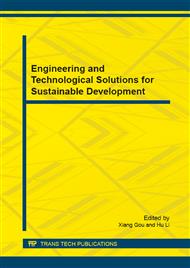p.536
p.542
p.549
p.554
p.558
p.563
p.568
p.576
p.580
Diversity Status and Conservation Countermeasures of Medicinal Fungus Resource in China
Abstract:
Fungus resources are abundant in China, many species are of medicinal value. Unfortunately, most of them mainly depend on collection from the nature. As the excessive exploitation and utilization in recent years, biodiversity and habitats of the medicinal fungi have suffered serious damage, which has made the resources sharply decline, which has severely restricted the medicinal fungal production and utilization. This paper mainly summarizes the status of distribution and utilization of the medicinal fungus in China, analyzes current problems, and a series of worthy protection countermeasures, and propose suggestions for further development and utilization of the medicinal fungus resources.
Info:
Periodical:
Pages:
563-567
Citation:
Online since:
November 2014
Authors:
Keywords:
Price:
Сopyright:
© 2014 Trans Tech Publications Ltd. All Rights Reserved
Share:
Citation:


